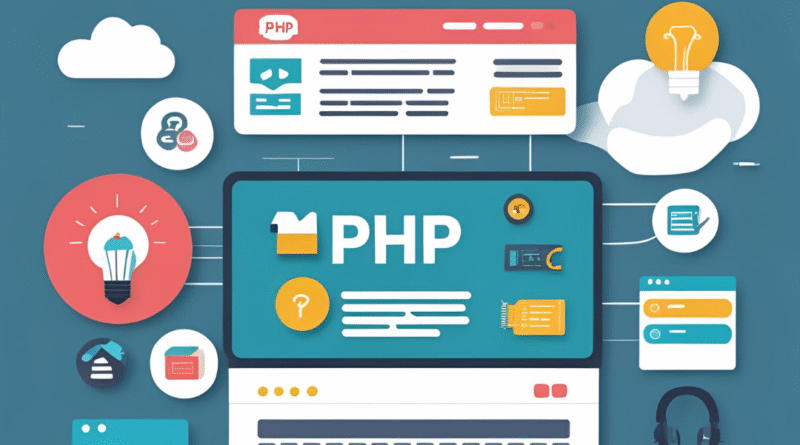PHP Security Best Practices:- Stop SQL Injection: Your PHP Security Shield!
Stop SQL Injection: Your PHP Security Shield!
Are you a PHP developer building awesome web applications? Then listen up! One of the biggest threats to your database security is something called SQL Injection. It sounds technical, but in simple terms, it’s like a hacker sneaking in malicious code through your website’s forms or URLs to steal, change, or even delete your precious data. Yikes!
But don’t panic! Preventing SQL injection isn’t rocket science. With a few smart moves, you can build a strong shield around your PHP applications and keep your database secure.
The Problem: When Your Code Trusts Too Much
Imagine you have a login form. A user types their username and password. If your PHP code just takes that input and shoves it directly into a SQL query (the instructions your application sends to the database), you’re vulnerable. A clever attacker could type something tricky into the username field that tricks your database into doing something it shouldn’t.
This is a massive security loophole, and it’s why web security is so crucial. Untrusted user input is the root of most SQL injection attacks.
The Solution: Your Unbreakable Defense!
So, how do we fix this? The answer lies in prepared statements with parameterized queries. These are your best friends for data protection in PHP.
1. Prepared Statements: The Superheroes of Security
Think of a prepared statement as a pre-defined template for your SQL query. You tell the database what kind of data to expect in each spot, but you don’t actually put the data in yet. It’s like filling out a form where you’ve already decided which boxes are for text, which are for numbers, and so on.
2. Parameterized Queries: The Smart Data Handlers
Once you have your prepared statement (your template), you then “bind” your actual user data to those placeholders. This is the magic step! The database now knows exactly where the user’s input goes and treats it only as data, not as executable code. This effectively neutralizes any malicious code an attacker might try to sneak in.
Why are these so powerful?
- Separation is Key: Your SQL logic is kept completely separate from the user’s input. This is a fundamental principle of secure coding practices.
- Automatic Escaping: The database handles all the necessary escaping and sanitization for you. You don’t have to worry about manually cleaning user input, which can be prone to errors.
- Performance Boost: Prepared statements can sometimes even offer performance benefits because the database can pre-optimize the query.
Example (Simplified PHP PDO):
PHP
<?php
// Connect to your database (using PDO for better security!)
$dsn = 'mysql:host=localhost;dbname=your_database';
$username = 'your_user';
$password = 'your_password';
try {
$pdo = new PDO($dsn, $username, $password);
$pdo->setAttribute(PDO::ATTR_ERRMODE, PDO::ERRMODE_EXCEPTION);
// User input (never trust this directly!)
$userInput = $_POST['username']; // Example from a form
// 1. Prepare the statement with a placeholder (?)
$stmt = $pdo->prepare("SELECT * FROM users WHERE username = ?");
// 2. Bind the user input to the placeholder
$stmt->execute([$userInput]);
// Fetch the results...
$user = $stmt->fetch(PDO::FETCH_ASSOC);
if ($user) {
echo "Welcome, " . htmlspecialchars($user['username']) . "!";
} else {
echo "User not found.";
}
} catch (PDOException $e) {
// Log the error, don't display it to users in production!
error_log("Database error: " . $e->getMessage());
echo "An error occurred. Please try again later.";
}
?>
In this example, $userInput is passed as a parameter to execute(). The database treats $userInput purely as data for the username column, preventing any SQL injection attempts.
Beyond Prepared Statements: Other Essential Tips
While prepared statements are your primary defense, here are other crucial PHP security tips for a robust web application security strategy:
- Always Validate and Sanitize Input: Even with prepared statements, it’s good practice to validate and sanitize user input on the server-side. This means checking if the data is in the expected format (e.g., an email address actually looks like an email).
- Principle of Least Privilege: Your database user accounts should only have the minimum necessary permissions. Don’t give a web application user full administrative rights to your database!
- Error Handling: Implement robust error handling but avoid displaying sensitive database errors directly to users. Log them securely instead.
- Keep Software Updated: Regularly update your PHP version, database software, and any libraries you use. These updates often include critical security patches.
- Use a Web Application Firewall (WAF): A WAF can provide an additional layer of protection by filtering out malicious traffic before it even reaches your application.
The Bottom Line: Build Secure, Not Sorry!
SQL injection prevention is not just a good idea; it’s a critical security measure for any serious PHP developer. By consistently using prepared statements and adopting a mindset of defensive programming, you can significantly reduce your risk of becoming another data breach statistic.
Invest in your application’s cybersecurity from day one. Your users, and your data, will thank you for it!



